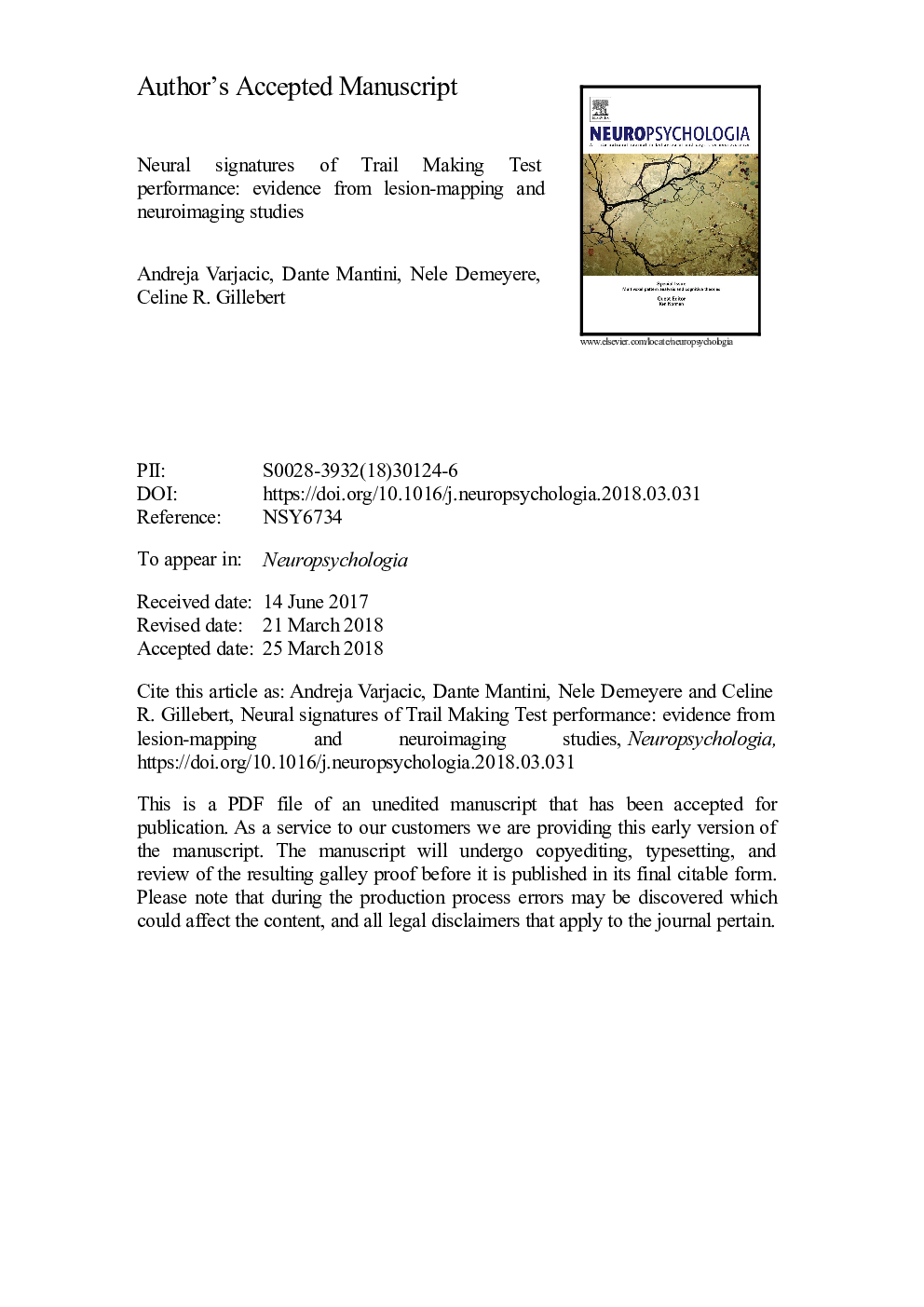| Article ID | Journal | Published Year | Pages | File Type |
|---|---|---|---|---|
| 7317378 | Neuropsychologia | 2018 | 32 Pages |
Abstract
The Trail Making Test (TMT) is an extensively used neuropsychological instrument for the assessment of set-switching ability across a wide range of neurological conditions. However, the exact nature of the cognitive processes and associated brain regions contributing to the performance on the TMT remains unclear. In this review, we first introduce the TMT by discussing its administration and scoring approaches. We then examine converging evidence and divergent findings concerning the brain regions related to TMT performance, as identified by lesion-symptom mapping studies conducted in brain-injured patients and functional magnetic resonance imaging studies conducted in healthy participants. After addressing factors that may account for the heterogeneity in the brain regions reported by these studies, we identify future research endeavours that may permit disentangling the different processes contributing to TMT performance and relating them to specific brain circuits.
Keywords
Related Topics
Life Sciences
Neuroscience
Behavioral Neuroscience
Authors
Andreja Varjacic, Dante Mantini, Nele Demeyere, Celine R. Gillebert,
